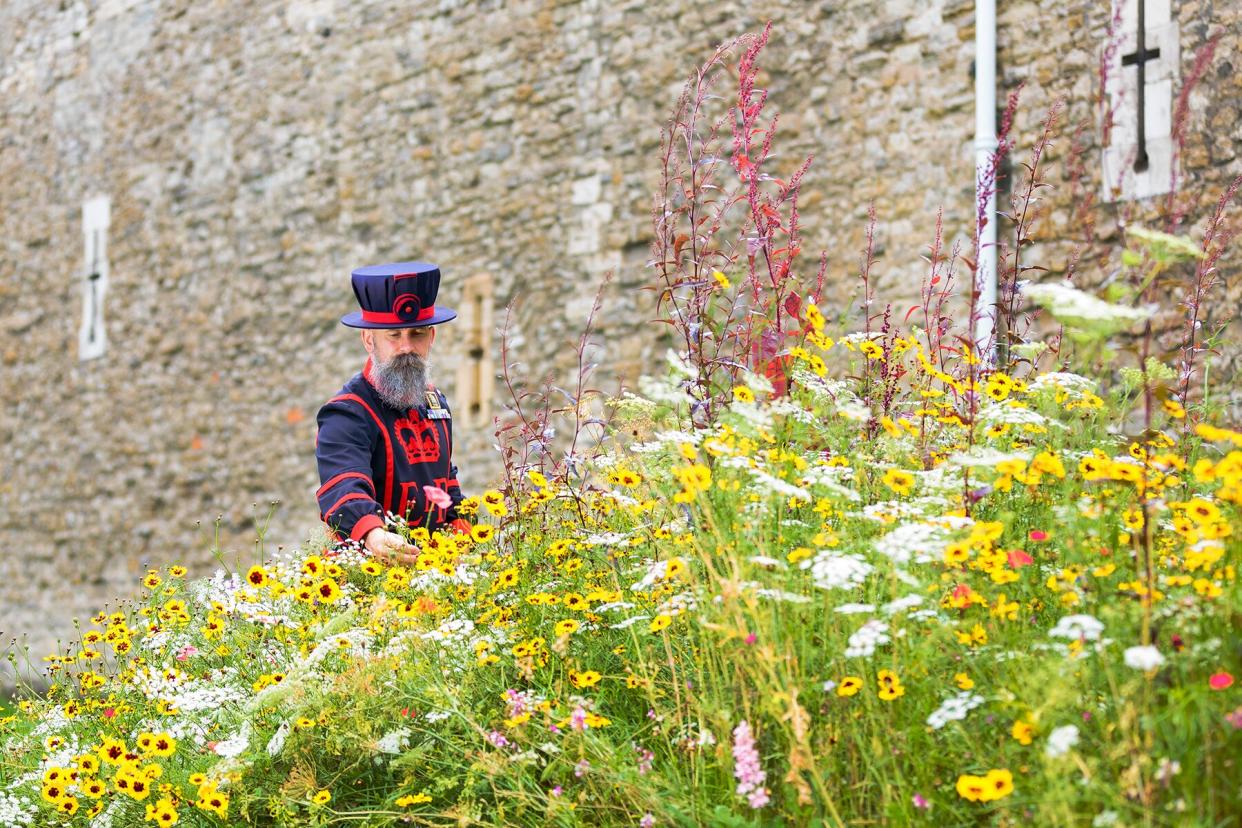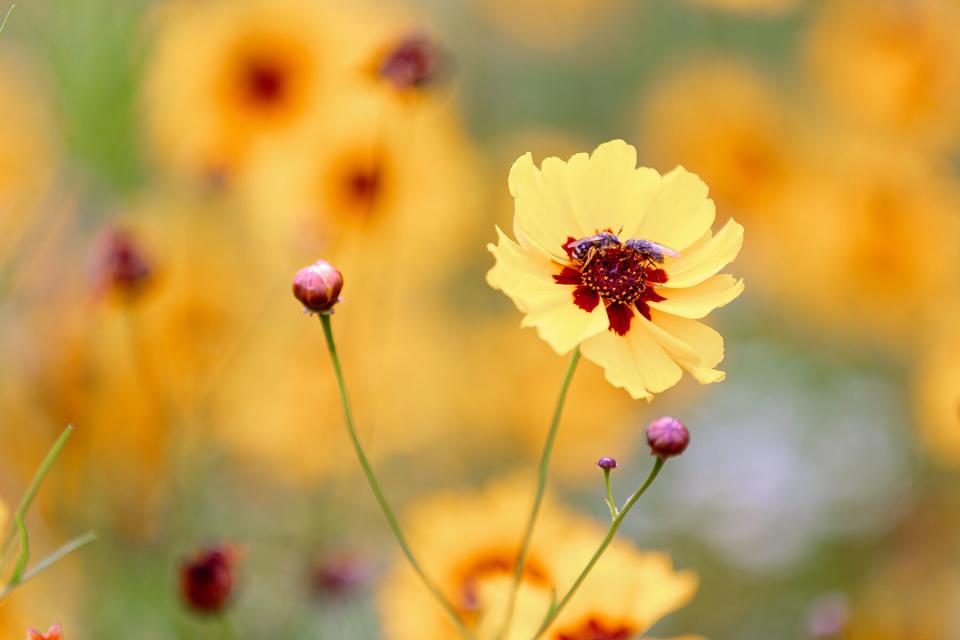The Tower of London's Moat Will Soon Bloom With 20 Million Flowers Honoring the Queen's Platinum Jubilee

Richard Lea-Hair/Courtesy of Historic Royal Palaces
The Tower of London is honoring the Queen's Platinum Jubilee with a show of colors like never before, with a Super Bloom event opening Wednesday and runs through Sept. 18.
Twenty million seeds representing 29 flower species have been planted in the moat around the tower, which has been a dry ditch since 1845. The floral artistry will constantly evolve throughout the summer months, starting with mostly green hues in June, as shades of whites, blues, pinks, and oranges will bloom though the peak of the season.
''The Tower's moat was designed in the 13th century to keep people out — now we're thrilled to be welcoming people, and nature, into this amazing new green space," Historic Royal Palaces' Tom O'Leary said in a statement sent to Travel + Leisure. "The weather might have set back our blooms, but they're gradually beginning to appear, and the moat is beginning to buzz with wildlife. We hope that we've created something joyful, celebratory and fun, with a lasting environmental legacy and we look forward to sharing it with visitors to the Tower this Summer."
The new plants, which were selected by Sheffield University Planting Professor Nigel Dunnett, also will serve as a new biodiverse habitat to attract wildlife to the urban space. Among the varieties are red poppies, yellow corn marigolds, blue cornflowers, sunflowers, cosmos and rudbeckias, and several kinds of wildflowers.

Richard Lea-Hair/Courtesy of Historic Royal Palaces
Inside the moat is a one-way route through a path lined with willows, winding through the flowers, where music from Scottish composer Erland Cooper's "Music for Growing Flowers" will play. Also on display will be a willow sculpture by artist Spencer Jenkins, as well as a copper insect swarm by sculptor Mehrdad Tafreshi.
At the heart of the display is the Queen's Garden, an ode to her 1953 coronation gown made by Norman Hartnell, and adorned with 12 cast glass forms by glass artist Max Jacquard. Located in the Bowling Green and designed to be viewed from above, the garden has a glass crown in the middle, as a tribute to the Crown Jewels that are kept at the Tower of London.
The royal super bloom will also come with a dose of serious fun. While it's possible to enter the area through the accessible visitor entrance, a four-lane super bloom Slide has also been added so that visitors can enjoy a more thrilling way to glide into the moat.

Richard Lea-Hair/Courtesy of Historic Royal Palaces
The super bloom will be open daily from 9 a.m. to 6 p.m., with the last time slot for entry from 5 to 5:30 p.m. through June. Starting July 1, Sunday through Wednesday will have the same hours, while Thursdays through Saturdays will offer extended evening hours through 10:30 p.m. (last time slot from 9 to 9:15 p.m.) with colorful lights complementing the flowers' hues.
Tickets to super bloom start at £12.00 for adults, £6.00 for children ages 5 to 15, and £9.60 for concessions (ages 16 and 17, over 65, and full-time students), while combination tickets with the Tower of London admission start at £36.50 for adults, £18.20 for children ages 5 to 15, and £29.20 for concessions.

